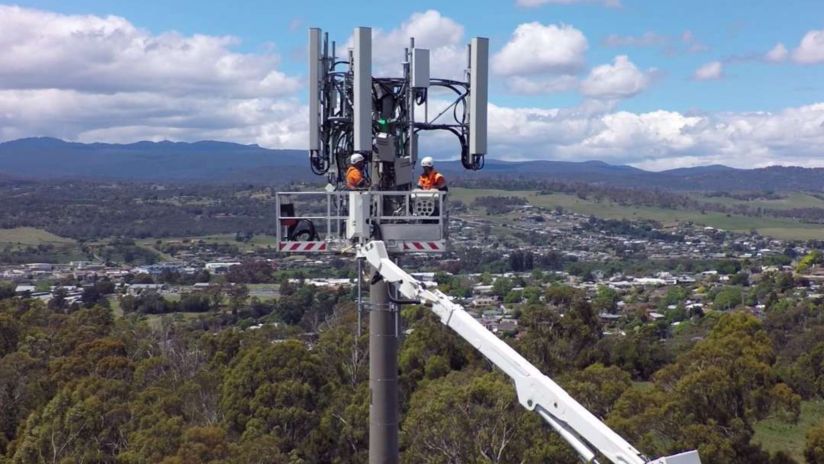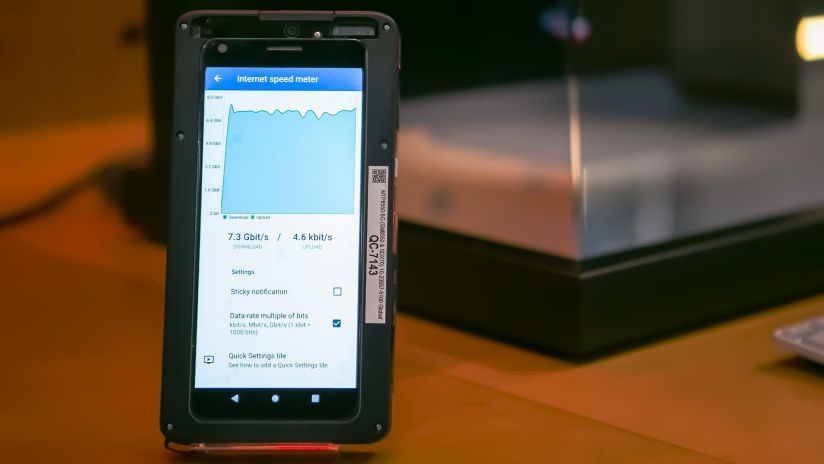Making Australia's best 5G even better

Today we’re announcing that we’ve launched a technology called Cloud RAN into our commercial 5G network with Ericsson across seven sites across the Gold Coast in Queensland.
This comes less than a year after we announced the beginning of Australian-first live trials of the technology on our 5G network, and is the first time anywhere in the world Ericsson’s Cloud Native Infrastructure Solutions has been utilised.
Our live implementation involves virtualising those sites’ RAN baseband and uses two mid-band 5G frequencies in 2600MHz and 3600Mhz with the Cloud RAN infrastructure. By enabling this infrastructure via the cloud at our exchanges, rather than relying on the base station, we can better utilise compute resources which is especially important as we make our network smarter and more resilient.
Or put a bit more simply, adding Cloud RAN to the network means that we can better manage our capacity across the network to help make sure that areas of high demand, particularly large events and seasonal hotspots, can operate at the high standard we know you expect.
What is Cloud RAN?
To understand Cloud RAN, it helps to first understand what each half of the name means.
You’re probably already familiar with the concept of “the cloud” – you’re probably using an app, website or product that works in the cloud every day. It’s essentially the name for centralised servers and databases that run applications, store data and files for you and then shares or streams them over the internet to your device.
With the Cloud you can access your data wherever you have an internet connection, without worrying about running bulky applications and storing terabytes of data on your device.
Now RAN stands for Radio Access Network. In simple terms, it’s the radio network composed of our thousands of cell towers that connect your devices to other parts of our core network. This core network, connects you to other users and the internet as well as managing things like your account information, location and a whole lot more.
At the moment, we need specialized equipment at our towers to execute all of that site’s RAN’s work, and each time there’s new technology to roll out, this equipment needs to be physically updated. This equipment is the “brains” of the RAN site – often called the “baseband”.
Now if you combine those concepts, you get Cloud RAN – essentially virtualising the baseband and putting the brains behind our mobile towers at another centralised cloud location in our Network. This allows us to share resources between many sites to better serve customers as traffic changes across the network.
Centralising and virtualising our RAN is critical to get the most out of 5G now and in the future. Deploying a 5G location needs about 150x the computing power than a 4G site, which means to achieve what 5G is capable of – including slicing and other services – we’d need to upgrade the RAN across thousands of sites.
This allows us to roll out network capacity and new features faster while making our networks more intelligent, flexible, reliable and secure.
How will Cloud RAN technology benefit me?

By being able to move capacity where it’s needed, we can reduce congestion when the traffic spikes at a site and better cater for areas that get high seasonal or holiday demand but don’t have enough constant demand year-round to need such high capacity equipment permanently.
Cloud RAN won’t completely solve all congestion moments if they’re limited by spectrum capacity, but if the bottleneck is due to something in our RAN, moving to the cloud will help to significantly reduce that.
That means when you’re packed into a stadium with 100,000 other AFL fans at the MCG, it’ll be faster and easier to get your snap up on Instagram. Or if you’re away at a popular holiday destination, you can stream the latest 4K movie on a rainy day without worry.
Connections to the Internet will be smoother as we’ll be able to serve your connection from one big pipe at the Cloud RAN location.
These benefits are just the start too – with our RAN virtualised, the speed in which new technologies can be deployed will be vastly quicker – paving the way for new uses we haven’t even thought about yet.
Evolving Australia’s best 5G

Upgrading our RAN to next generation technology is just the latest of some pretty major evolutions in our 5G network, including the world’s first packetized fronthaul solution and advancing edge computing applications capabilities.
Over the past year, we’ve also been building out our 5G Standalone network, which Cloud RAN will play an extremely important part of as it rolls out. 5G Standalone uses built-for-purpose 5G infrastructure at every link along the network chain, from the 5G radio access network to the 5G core.
These technologies working together also enhance Edge computing, allowing for the processing of data and running of applications closer to customers leveraging a 5G Standalone network connection, unlocking the potential for a range of new innovative and more reliable services.
The 5G Standalone architecture also allows for new customised service ‘slices’ to be stood up in minutes rather than days or weeks, using a technology called “network orchestration” that automates what would otherwise be typically a highly manual processes in previous mobile generations.
One example of where Cloud RAN helps to supercharge is network slicing. This means we can allocate and control bandwidth, storage and data processing power for a particular customer or application on our 5G network. It lets us design custom solutions to meet the needs of our business partners and industries – including things like extremely low latency and bulletproof reliability.
These upgrades to our 5G network complement what is already Australia’s best, covering over 85% of Australia’s population (and counting) and the ultra-fast mmWave band 5G we’re currently bringing to Australian cities and major towns.
It feels like we’ve been in the era of 5G for a while now, but the truth is, we’re just getting started.